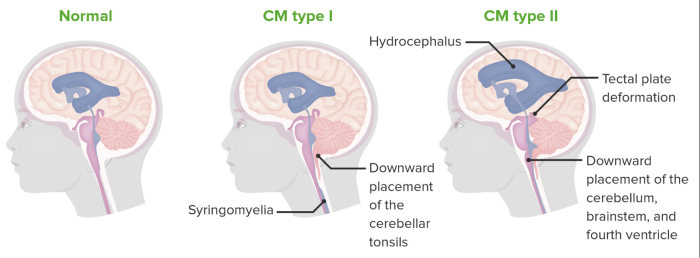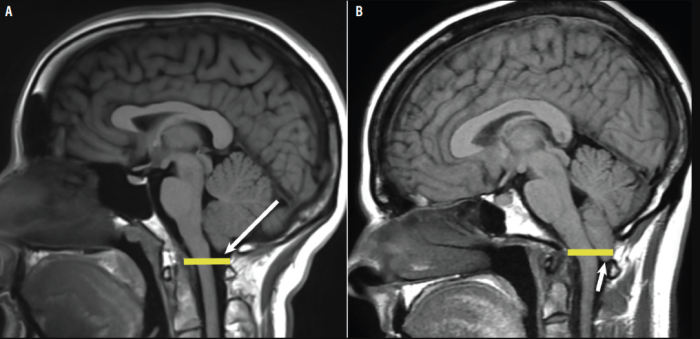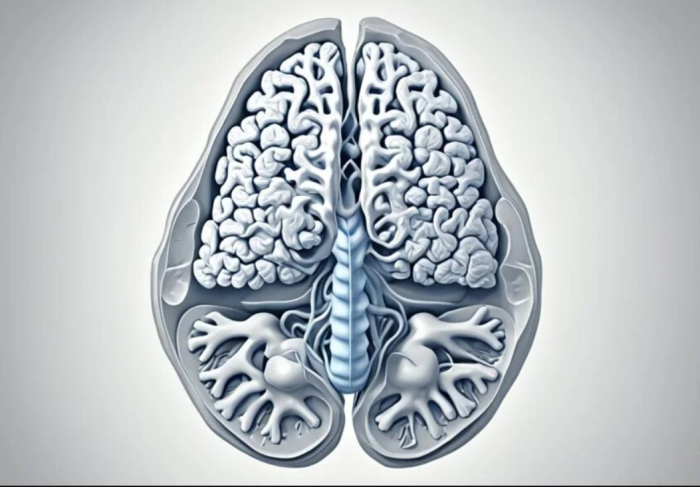Introduction to Chiari Malformation: What Is It?
Chiari malformation is a structural defect in the cerebellum, the part of the brain responsible for controlling balance. It occurs when part of the cerebellum, known as the cerebellar tonsils, extends into the spinal canal. This abnormality can disrupt the normal flow of cerebrospinal fluid (CSF), leading to a variety of neurological symptoms. Chiari malformations are typically congenital, meaning they are present at birth, but symptoms may not appear until later in life.
There are different types of Chiari malformations, ranging in severity, and some individuals may be asymptomatic. In other cases, the condition can cause severe headaches, neck pain, and other neurological issues. Early diagnosis and management are key to preventing complications and improving the quality of life for affected individuals.
Types of Chiari Malformations: Understanding the Variations
Chiari malformations are classified into several types based on the severity of the structural abnormality and the extent of the brain tissue herniation into the spinal canal. Type I is the most common and typically less severe form, where the cerebellar tonsils extend slightly into the spinal canal. Symptoms may not appear until adolescence or adulthood.
Type II, known as Arnold-Chiari malformation, involves a larger portion of the cerebellum and brainstem being pushed into the spinal canal and is often associated with spina bifida. Type III is a rare and severe form in which the cerebellum and brainstem herniate into the spinal canal, usually presenting significant neurological impairment. Type IV, an extremely rare form, is characterized by an underdeveloped (hypoplastic) cerebellum rather than herniated tissue.
Understanding the type of Chiari malformation is crucial for determining the best course of treatment and predicting long-term outcomes.

Common Symptoms of Chiari Malformation
Symptoms of Chiari malformation can vary widely depending on the type and severity of the condition. Common symptoms include headaches, often starting at the back of the head and neck, and exacerbated by coughing, sneezing, or physical exertion. Neck pain, which may radiate to the shoulders and upper back, is another frequent symptom. Many patients experience balance problems, such as dizziness, unsteady walking, and difficulty coordinating movements.
Muscle weakness, particularly in the arms and legs, may also occur. Other symptoms can include numbness or tingling in the extremities, often in the hands or feet, difficulty swallowing (dysphagia) sometimes accompanied by choking or gagging, and visual disturbances like double vision or sensitivity to light. Since these symptoms can overlap with other conditions, proper medical evaluation is necessary to confirm a diagnosis of Chiari malformation.
Recognizing Early Signs of Chiari Malformation in Adults
In adults, Chiari malformation often presents with subtle symptoms that may gradually worsen over time. Early signs include persistent headaches, particularly those triggered by activities that increase intracranial pressure, such as straining or sneezing. Adults may also experience neck pain, dizziness, and balance issues, which can be mistaken for common age-related conditions.
Other early signs may include numbness or tingling in the hands and feet, difficulty with fine motor skills, and in some cases, trouble swallowing. Visual disturbances, such as double vision or light sensitivity, may also emerge. Since Chiari malformations can progress if left untreated, early recognition and consultation with a neurologist or neurosurgeon are critical for managing symptoms and preventing complications.
Symptoms of Chiari Malformation in Children: What Parents Should Know
In children, Chiari malformation can present with a variety of symptoms, many of which may be subtle or mimic other conditions. Frequent headaches, particularly those located at the back of the head, are often one of the first signs. Infants and young children may display symptoms such as irritability, excessive crying, and feeding difficulties.
Other common symptoms in children include poor balance, difficulty walking, and delayed motor skills. Children may also experience numbness or weakness in the arms and legs, along with breathing problems, such as sleep apnea or noisy breathing. In more severe cases, there may be spinal abnormalities like scoliosis, which can be linked to the malformation. Parents who notice any of these symptoms should seek medical evaluation promptly, as early diagnosis and treatment are essential for preventing long-term complications.
How Chiari Malformation Affects the Nervous System
Chiari malformation occurs when the lower part of the brain, the cerebellum, extends into the spinal canal. This structural defect compresses the brainstem and spinal cord, disrupting the normal flow of cerebrospinal fluid (CSF). The pressure on the nervous system can lead to a wide range of symptoms, including headaches, balance issues, and impaired motor skills. The condition affects both the central and peripheral nervous systems, causing disruptions in brain function, motor control, and sensory processing.

Headaches and Neck Pain: Key Indicators of Chiari Malformation
Headaches, often described as intense and pressure-like, are a common symptom of Chiari malformation, particularly when triggered by activities like coughing, sneezing, or straining. These headaches typically start at the back of the skull and can radiate to the neck and shoulders, often accompanied by stiffness and discomfort in the neck area. These symptoms are critical indicators of the condition and may worsen as the brainstem and spinal cord become more compressed.
Neurological Symptoms Associated with Chiari Malformation
Chiari malformation can cause a range of neurological symptoms due to its impact on the brain and spinal cord. Common issues include dizziness, vertigo, muscle weakness, and difficulty with fine motor tasks. Some patients may experience numbness or tingling in the hands and feet, as well as problems with balance and coordination. The severity of these symptoms varies depending on the extent of the malformation and the degree of pressure on the nervous system.
Balance and Coordination Issues: Early Signs of Chiari Malformation
Balance and coordination issues are often early signs of Chiari malformation. Patients may notice difficulty walking, a tendency to stumble or fall, or problems with hand-eye coordination. These symptoms are caused by the compression of the cerebellum, which is responsible for maintaining balance and coordinating movements. In more severe cases, these issues can significantly impact daily activities, requiring medical intervention.
Recognizing Speech and Swallowing Difficulties in Chiari Malformation
Speech and swallowing difficulties, known as dysarthria and dysphagia, are less common but significant symptoms of Chiari malformation. These occur when the brainstem is compressed, affecting the nerves that control the muscles involved in speaking and swallowing. Patients may experience slurred speech, hoarseness, or difficulty swallowing food and liquids, which can lead to choking or malnutrition in severe cases.
The Link Between Chiari Malformation and Sleep Apnea
Chiari malformation is closely associated with sleep apnea, a condition where breathing repeatedly stops and starts during sleep. This occurs because the malformation can compress the brainstem, which regulates respiratory function. As a result, patients with Chiari malformation may experience obstructive or central sleep apnea, leading to interrupted sleep, fatigue, and other health complications.
Sensory Impairments: Numbness and Tingling in Chiari Malformation Patients
Sensory impairments such as numbness, tingling, or a "pins and needles" sensation are common in Chiari malformation patients. These sensations typically affect the arms, hands, legs, or feet and are caused by the disruption of nerve signals due to the compression of the spinal cord or brainstem. In some cases, patients may also experience hypersensitivity to touch, further complicating daily activities.
Cognitive and Emotional Symptoms Linked to Chiari Malformation
While primarily a structural issue, Chiari malformation can also affect cognitive function and emotional health. Some patients report difficulty concentrating, memory problems, or brain fog. Additionally, the chronic nature of the condition, along with persistent pain and neurological symptoms, can lead to emotional issues such as anxiety and depression. The psychological impact often requires a comprehensive treatment approach that addresses both physical and mental health.

Progressive Symptoms: When to Seek Immediate Medical Attention
Chiari malformation symptoms can progressively worsen over time, especially if the condition goes untreated. Warning signs that require immediate medical attention include sudden or severe headaches, loss of motor function, difficulty breathing, or episodes of fainting. These progressive symptoms indicate that the brainstem and spinal cord are under increasing pressure, which could lead to life-threatening complications without prompt intervention.
Misdiagnosis of Chiari Malformation: Why Symptoms Are Often Overlooked
Chiari malformation is often misdiagnosed or overlooked because its symptoms, such as headaches, dizziness, and numbness, can resemble other common neurological conditions like migraines or multiple sclerosis. Additionally, because the condition progresses slowly, patients may not seek medical help until symptoms become severe. Early and accurate diagnosis through MRI imaging is essential to prevent complications and ensure appropriate treatment.
Diagnosing Chiari Malformation: MRI and Other Diagnostic Tools
The primary diagnostic tool for Chiari malformation is magnetic resonance imaging (MRI), which provides detailed images of the brain and spinal cord. An MRI can clearly show if the cerebellum is herniating into the spinal canal, the hallmark of Chiari malformation. Other diagnostic tools may include computed tomography (CT) scans for further assessment, particularly to check for associated bone abnormalities. In some cases, a cine MRI is used to assess the flow of cerebrospinal fluid (CSF) and to understand the severity of the condition.
Differentiating Chiari Malformation from Other Neurological Conditions
Differentiating Chiari malformation from other neurological conditions can be challenging due to overlapping symptoms, such as headaches, dizziness, and balance issues, which can mimic conditions like multiple sclerosis, migraines, or spinal cord disorders. MRI imaging is crucial in distinguishing Chiari malformation because it specifically reveals the structural abnormality in the brain. Additionally, neurological exams and CSF flow studies may help in ruling out other conditions that produce similar symptoms.
The Impact of Chiari Malformation on Daily Life and Activities
Chiari malformation can significantly impact daily life, depending on the severity of the symptoms. Many patients struggle with chronic pain, frequent headaches, and fatigue, which can limit their ability to engage in routine activities. Balance and coordination issues may lead to difficulty walking or performing tasks that require fine motor skills. In more severe cases, patients may experience speech and swallowing problems, sensory impairments, and cognitive difficulties, making it challenging to work, study, or maintain an active lifestyle.
Best Chiari Malformation Surgery in India
The Best Chiari Malformation Surgery in India is performed by expert neurosurgeons who utilize advanced techniques to ensure optimal outcomes for patients, offering a personalized treatment plan tailored to individual health needs.
Best Chiari Malformation Surgery Hospitals in India
The best chiari malformation surgery hospitals in india are equipped with cutting-edge technology and facilities, providing top-notch care, including pre-surgery consultations, surgical expertise, and post-operative recovery support to ensure a smooth patient journey.
Chiari Malformation Surgery Cost in India
When considering the chiari malformation surgery cost in india, patients benefit from affordable and transparent pricing at leading hospitals, which offer cost-effective treatment options without compromising the quality of care.
Best Chiari Malformation Surgery Doctors in India
The best chiari malformation surgery doctors in india are highly experienced in performing the procedure, utilizing a patient-centric approach that ensures personalized care, precise surgical techniques, and dedicated follow-up care to enhance recovery.
Recognizing Symptoms in Asymptomatic Cases: Is Screening Necessary?
Some individuals with Chiari malformation may be asymptomatic, meaning they show no outward signs of the condition. In these cases, the malformation is often discovered incidentally during imaging tests for unrelated issues. While routine screening is not generally recommended for asymptomatic individuals, early diagnosis can be beneficial in preventing potential future complications, especially if symptoms begin to develop later. For patients with a family history of Chiari malformation, screening may be considered.
When to See a Specialist: How Early Diagnosis Can Prevent Complications
Seeing a specialist, such as a neurologist or neurosurgeon, is critical if you experience persistent symptoms like severe headaches, dizziness, or balance problems. Early diagnosis can help prevent complications like syringomyelia (a fluid-filled cyst in the spinal cord) or permanent nerve damage. Timely intervention allows for better management of symptoms, and in some cases, early surgical treatment can prevent the progression of neurological deficits.
FAQs About Recognizing the Symptoms of Chiari Malformation
What are the most common symptoms of Chiari malformation?
The most common symptoms include severe headaches, especially at the back of the head, dizziness, balance issues, neck pain, and sensory disturbances like numbness or tingling in the limbs. Some patients may also experience difficulty swallowing or speech problems.
How does Chiari malformation affect balance and coordination?
Chiari malformation compresses the cerebellum, which is responsible for balance and coordination. This can lead to unsteadiness while walking, frequent falls, and difficulty with tasks that require fine motor skills, such as writing or buttoning clothes.
Are headaches always a sign of Chiari malformation?
No, headaches are not always a sign of Chiari malformation, as they can be caused by many other conditions like migraines or tension headaches. However, Chiari-related headaches are often exacerbated by coughing, sneezing, or straining and typically occur at the back of the head and neck.
Can Chiari malformation cause cognitive or emotional issues?
Yes, some patients with Chiari malformation report cognitive symptoms such as difficulty concentrating, memory problems, or brain fog. Chronic pain and neurological symptoms can also contribute to emotional issues like anxiety and depression, particularly if the condition impacts daily functioning.
How is Chiari malformation diagnosed?
Chiari malformation is primarily diagnosed through MRI, which provides clear images of the brain and spinal cord. Neurological exams and additional imaging tests like CT scans or cine MRIs may also be used to assess the severity and impact of the condition.
What should parents look for in children who may have Chiari malformation?
Parents should watch for signs like frequent headaches, difficulty with balance or coordination, unexplained weakness, or developmental delays in motor skills. In infants, symptoms may include difficulty swallowing, irritability, and poor head control.
How does Chiari malformation impact daily life?
The condition can affect daily life by causing chronic pain, limiting physical activities, and impairing balance and coordination. Some patients may also experience cognitive issues, which can make it difficult to concentrate or complete tasks. Severe cases may lead to long-term disabilities that affect work and social interactions.
Can Chiari malformation be misdiagnosed as another condition?
Yes, Chiari malformation is often misdiagnosed as migraines, multiple sclerosis, or other neurological disorders because many symptoms overlap. MRI imaging is essential for an accurate diagnosis to avoid misdiagnosis and ensure proper treatment.
Is it possible to have Chiari malformation without symptoms?
Yes, some people with Chiari malformation are asymptomatic, meaning they do not experience noticeable symptoms. The condition may only be discovered incidentally during imaging for other health issues.
What treatments are available after diagnosing Chiari malformation?
Treatment options include pain management for mild cases, physical therapy to address balance and coordination issues, and surgery for more severe cases. The most common surgical procedure is posterior fossa decompression, which aims to relieve pressure on the brain and spinal cord by removing a small portion of bone at the back of the skull.